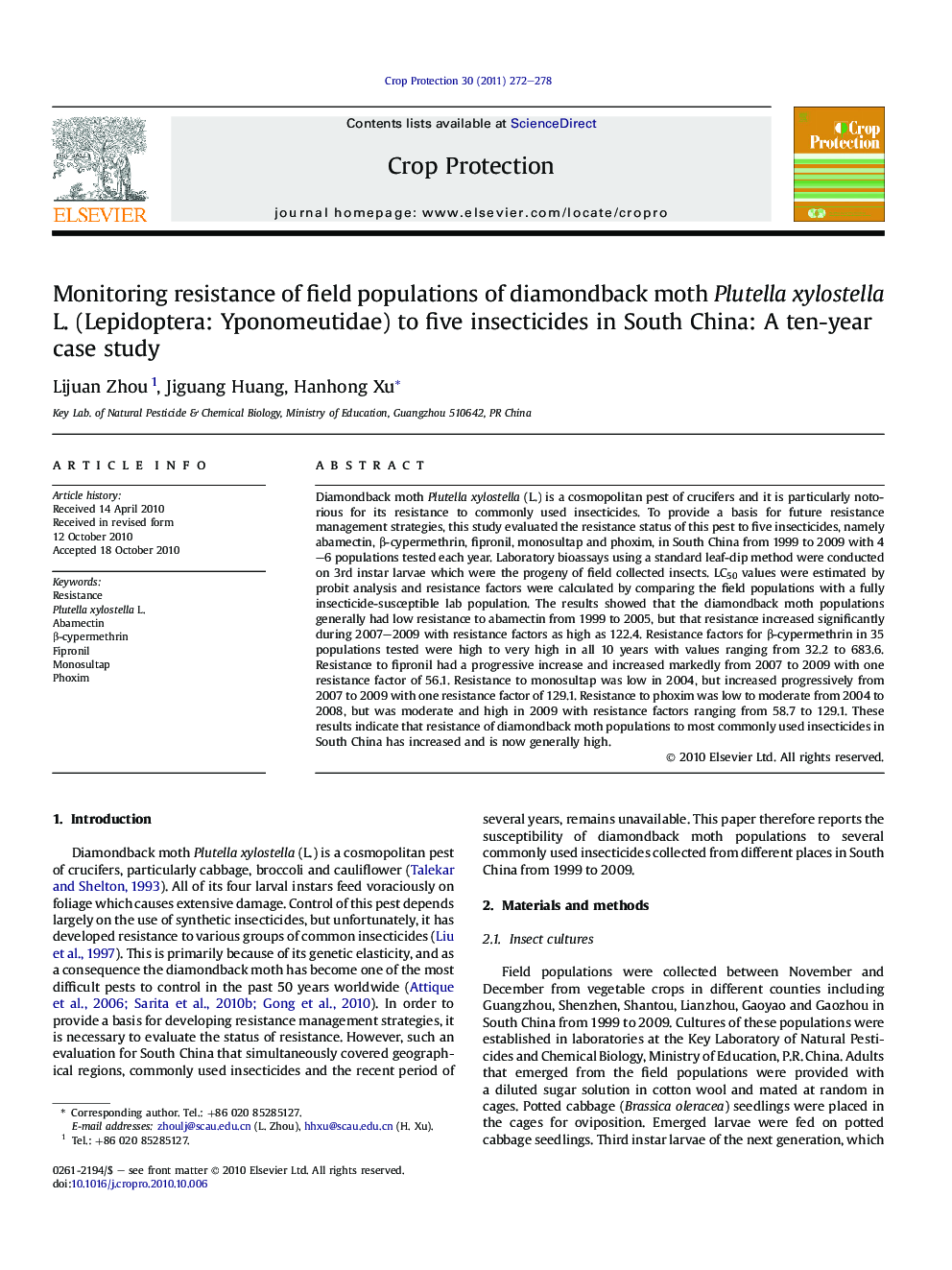| Article ID | Journal | Published Year | Pages | File Type |
|---|---|---|---|---|
| 6373906 | Crop Protection | 2011 | 7 Pages |
Diamondback moth Plutella xylostella (L.) is a cosmopolitan pest of crucifers and it is particularly notorious for its resistance to commonly used insecticides. To provide a basis for future resistance management strategies, this study evaluated the resistance status of this pest to five insecticides, namely abamectin, β-cypermethrin, fipronil, monosultap and phoxim, in South China from 1999 to 2009 with 4-6 populations tested each year. Laboratory bioassays using a standard leaf-dip method were conducted on 3rd instar larvae which were the progeny of field collected insects. LC50 values were estimated by probit analysis and resistance factors were calculated by comparing the field populations with a fully insecticide-susceptible lab population. The results showed that the diamondback moth populations generally had low resistance to abamectin from 1999 to 2005, but that resistance increased significantly during 2007-2009 with resistance factors as high as 122.4. Resistance factors for β-cypermethrin in 35 populations tested were high to very high in all 10 years with values ranging from 32.2 to 683.6. Resistance to fipronil had a progressive increase and increased markedly from 2007 to 2009 with one resistance factor of 56.1. Resistance to monosultap was low in 2004, but increased progressively from 2007 to 2009 with one resistance factor of 129.1. Resistance to phoxim was low to moderate from 2004 to 2008, but was moderate and high in 2009 with resistance factors ranging from 58.7 to 129.1. These results indicate that resistance of diamondback moth populations to most commonly used insecticides in South China has increased and is now generally high.
Research highlights⺠The resistance status of Plutella xylostella (L.) to five insecticides, namely abamectin, β-cypermethrin, fipronil, monosultap and phoxim were studied in South China from 1999 to 2009. ⺠There was high resistance of diamondback moth populations to most commonly used insecticides. ⺠Our results provided a basis for future resistance management strategies. β-cypermethrin should no longer be used to control the diamondback moth in South China, solely or in mixture. As to the other tested pesticides, rotation strategy would be very important.
